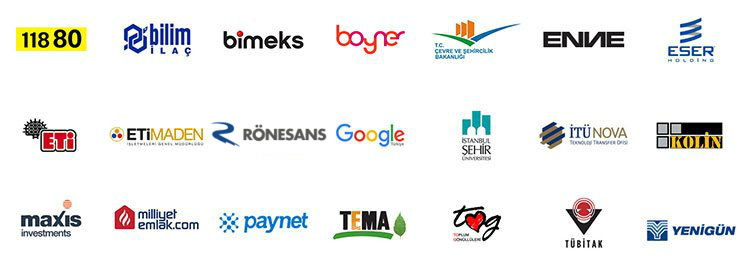
The construction sector is a colossal industry that lays the cornerstones of civilization.
However, behind this immense power lie chronic problems that the industry has been grappling with for decades.
Project delays, budget overruns, safety issues, and unpredictability seem to have become the industry standard.
But what if there was a proven way to make projects more predictable, more efficient, and more profitable?
This is where a philosophy born from the manufacturing revolution, with the potential to transform the construction industry, comes into play: Lean Construction.
This is not just a new methodology, but a way of thinking that fundamentally changes the way work is done.
The Chronic Problems of Traditional Construction: Delays, Budget Overruns, and Waste
Traditional construction project management often focuses on managing a series of sequential and disconnected tasks.
This approach inherently contains uncertainty and complexity.
Communication breakdowns, a lack of coordination between subcontractors, and last-minute changes can create a domino effect, upending the entire project schedule.
A common problem is the adversarial relationship between teams at different stages of the project, which reduces trust and hinders collaboration.
Materials arriving on-site too early or too late, unnecessary transportation, rework due to errors, and teams waiting to start the next task are tangible examples of both time and money being wasted.
These inefficiencies permeate every stage of the project, increasing costs and reducing quality.
The Crisis in Numbers: The Cost of Inefficiency in the Construction Sector
These problems are not just annoying operational hiccups; they are symptoms of a multi-billion-dollar inefficiency crisis.
The cost of this inefficiency directly impacts the industry's profitability and puts the success of projects at risk.
One of the most striking pieces of data on this subject is provided by the global management consulting firm, McKinsey.
According to a report by the McKinsey Global Institute, large construction projects typically take 20% longer to finish than scheduled and are up to 80% over budget.
Think about what those numbers mean for a moment.
This means a $100 million project could end up costing $180 million and, if scheduled to finish in 12 months, could take 14-15 months.
This situation leads not only to financial losses but also to legal disputes among stakeholders, damaged reputations, and wasted resources.
The industry cannot move forward without solving this structural problem.
The Solution: Focusing on Creating Value and Eliminating Waste
The solution is to adopt the philosophy of Lean Construction, which fundamentally changes the perspective on project management.
Lean Construction sees the entire project process as a holistic "value stream" rather than a series of individual tasks.
The primary goal is to maximize value for the customer while eliminating any activity that does not add value—in other words, "waste."
What are the core principles of Lean Construction?
Lean thinking is built on five core principles, which have been successfully adapted to the construction industry.
- Define Value: Clearly define what "value" is for the customer at the very beginning of the project. Value is always determined from the perspective of the end-user or client.
- Map the Value Stream: Identify all the steps that create value (the necessary ones) and the waste (the unnecessary ones) from the start of the project to its completion.
- Create Continuous Flow: Ensure a seamless workflow by removing obstacles, waits, and interruptions between the value-creating steps.
- Establish a Pull System: Do not perform work without a demand from the next process. This is based on the "just-in-time" philosophy and prevents overproduction and excess inventory.
- Seek Perfection: Create a culture of continuous improvement (Kaizen) to relentlessly question and improve processes to reduce waste and increase value.
What does "waste" mean in Lean Construction?
The Lean philosophy defines any activity that does not add value as "waste" and divides it into eight main categories.
- Transport: Unnecessary movement of materials or equipment around the site.
- Inventory: Excess material piled up on-site before it is needed.
- Motion: Unnecessary movement by workers, such as walking to get tools or materials.
- Waiting: A crew waiting for the previous crew to finish their work or for materials to arrive.
- Overproduction: Doing work earlier or in greater quantities than is needed.
- Over-processing: Doing more high-quality or detailed work than the customer requested or is willing to pay for.
- Defects: Reworking mistakes, which is one of the most costly forms of waste.
- Skills (Unused Talent): Not fully utilizing the knowledge, skills, and creativity of team members.
What is the Last Planner System (LPS) and how does it work?
The Last Planner System® (LPS) is the most common and effective collaborative planning tool used to implement Lean Construction principles on-site.
Unlike traditional top-down planning, LPS involves the people who actually do the work (foremen, site engineers) in the planning process.
This ensures the creation of more realistic and reliable plans.
The core components of LPS are: Master Scheduling, Phase Scheduling, Look-ahead Planning, Weekly Work Planning, and Learning (deriving lessons from completed work).
This system significantly reduces project uncertainty by focusing on what can be done, rather than just what should be done.
What are the benefits of Lean Construction?
Projects that adopt Lean principles achieve tangible and measurable benefits compared to traditional methods.
- Increased Safety: A more organized and predictable worksite means fewer accidents.
- Improved Schedule Reliability: Projects finish on time or even ahead of schedule.
- Cost Savings: Eliminating waste reduces material, labor, and equipment costs.
- Higher Quality: A reduction in errors and rework increases the quality of the final product.
- Increased Team Morale: The collaborative environment and clarity in processes increase the satisfaction of all stakeholders.
Common Mistakes in Lean Transformation
While the benefits of Lean Construction are clear, a successful transformation is not guaranteed.
The most common mistake is to view Lean merely as a set of tools (like LPS) while ignoring the underlying cultural change.
A lack of leadership commitment and buy-in is the biggest enemy of transformation.
If top management does not fully embrace and support the philosophy, middle managers and site crews will revert to their old habits.
Another mistake is inadequate training.
It is critical that all team members understand the Lean principles, what waste means, and why the new processes are important.
This is not an overnight change; it is a journey that requires patience and consistency.
The Future of Construction: Lean Thinking and Technology
The potential of the Lean Construction philosophy is further amplified when combined with modern construction technologies.
Building Information Modeling (BIM) creates a digital twin of the project, allowing all stakeholders to collaborate around a single source of truth.
This directly supports the principles of transparency and communication that are fundamental to Lean.
Off-site construction techniques like prefabrication and modular building reduce on-site variability, waste, and safety risks by manufacturing in a controlled environment.
Data analytics and sensor technologies provide valuable insights for continuous improvement cycles by monitoring project performance in real-time.
Technology is a powerful lever that facilitates the implementation of the Lean philosophy and multiplies its benefits.
Conclusion: Towards a Smarter, More Efficient Construction Industry
Lean Construction is not a set of rules or a passing trend.
It is a business culture focused on systematically eliminating waste and maximizing value for the customer.
It offers a proven solution to the chronic problems of traditional construction and makes projects safer, faster, higher quality, and more profitable.
In an industry struggling with uncertainty and inefficiency, adopting Lean thinking is no longer an option but a necessity for survival and success in the future.







